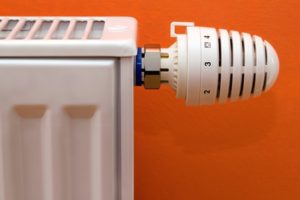Steps for Bleeding a Radiator This Winter
 Bleeding a radiator is a normal routine for many homeowners and renters during winter. You’ll know it’s time to bleed the radiator if the bottom feels warm but the top feels cool. If there is a lot of air trapped inside, the radiator will feel cold all over. Bleeding a radiator is an easy maintenance job that any handyman can do. It also improves the efficiency of your entire heating system – both in terms of heating and monetary savings.
Bleeding a radiator is a normal routine for many homeowners and renters during winter. You’ll know it’s time to bleed the radiator if the bottom feels warm but the top feels cool. If there is a lot of air trapped inside, the radiator will feel cold all over. Bleeding a radiator is an easy maintenance job that any handyman can do. It also improves the efficiency of your entire heating system – both in terms of heating and monetary savings.
The one item you will need for this process is a radiator key. A flat-head screwdriver from EqiupSupply.com can also work with many radiators if you don’t have the key. The first step for bleeding a radiator is to turn on the heat and wait for all units to get fully hot. Next, determine which radiators need bleeding by checking them one by one to see if all the parts are warming up normally. Be cautious when checking the temperature at this stage to prevent accidental burns. Once you have found all the units with cool spots proceed to bleed them.
Switch off the heat to prevent more air from entering the system. Doing so will also minimize the risk of burns and a soaked floor. Remember to count how many turns it takes you to turn off each radiator valve. Attach the radiator key to the valve located at the top end of the radiator. If you are using a screwdriver, place it into the groove. Position a cloth below each valve to catch any moisture. It is also a good idea to wrap a cloth around your hand as a protective shield in case water that escapes from the radiator drips on you.
Slowly turn the radiator key counter clockwise. Don’t be alarmed when you hear a hissing sound as it signals that gas is escaping. When water starts to drip out of the valve, you’ll know that all the air has been removed from the radiator. Tighten the valve quickly back to it’s original position.
Finally, be sure to check the pressure by taking a look at the gauge on your boiler. If the pressure is too low top it up by using level on top of the boiler. Switch the heating back on once this entire process is complete. After a few hours make sure that each radiator you have worked on has a uniform temperature throughout the entire surface and there is no water leaking from the bleed valve.